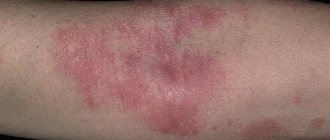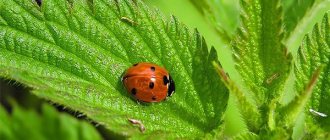An allergy is an individual reaction of the body, determined by the specifics of the immune system. The body reacts intensely to contact with allergens in the air or food. It’s especially unpleasant when a reaction occurs where you definitely don’t expect it - in a house or apartment. An allergy to dust can unsettle anyone and greatly damage the health of a child and an adult.
Why does it occur? How does a dust allergy manifest itself and how to distinguish it from a cold? Is it possible and how to get rid of the problem? We talk about the rules for surviving an allergy sufferer in your own home.
Why do allergies to house dust occur?
Dust surrounds us everywhere in the house. If you forget about cleaning for three or four days, you will notice how accumulations of gray microparticles will begin to appear on the floor, behind doors, and under tables. This is household dust, and its composition is extremely diverse.
In it you can find microparticles of everything that is in your home:
- dead particles of your skin;
- pet hair;
- fragments of street dirt;
- pollen from indoor and outdoor plants.
And if you look at the dust even more closely under a microscope, you will notice that there is life in it. Tiny insects called dust mites find a home and food here. These insects are saprophytes, that is, they live in close proximity to humans. They do not harm us: dust mites do not bite people, do not transmit infectious diseases, and are not even visible to the eye, since their size barely exceeds 0.1 mm.
They pose a danger only to allergy sufferers: the excrement of dust mites contains a protein foreign to our body. When these microparticles end up in the air and land on the mucous membranes of the eyes and nasopharynx, they can provoke an allergic reaction.
Allergies to house dust mites can occur at any age. If the reaction manifests itself in childhood, it persists for life.
How to deal with dust mites
Most often, allergies in children are provoked by arthropods of the arachnid class. They do not drink blood and do not bite humans; health problems result from inhaling waste products of parasites and larvae.
How to relieve symptoms:
- Carry out wet cleaning of the premises daily.
- Use air humidifiers and air conditioning units.
- Dry bedding thoroughly at high temperatures.
If such preventive methods do not help, then, as prescribed by your doctor, you can take a course of type 1 histamine receptor blockers or membrane-stabilizing drugs.
Features of dust allergy in a child
The reaction can develop from the first days of life. The immune system of children is imperfect, and therefore any allergen that the baby comes into contact with frequently can cause unpleasant symptoms.
You can suspect an allergy if both parents of the baby are allergic. Formula-fed babies are more often susceptible to allergic reactions, since formulas, unlike breast milk, do not contain components that support the proper formation of immunity.
In childhood, allergies to household dust are especially dangerous, as they can cause the rapid development of chronic diseases. According to statistics, for this reason, young children most often develop asthma, which is accompanied by breathing problems and poses a risk of suffocation. Therefore, treatment of dust allergies in children is necessary.
Cleaning and preventing carpet ticks
First, you need to vacuum to rid the carpet surface of dust. Then apply detergents to the carpet and dry it well.
You can also buy a special device on the market that helps in cleaning the carpet from ticks. This is a Rainbow vacuum cleaner with an Aqua separator-type filter, designed for disinfection and treatment of various surfaces, including furniture, children's toys, even outerwear. This product will thoroughly disinfect the surface of the carpet, humidify the air, ridding the room of harmful germs and mites. This device has many advantages, one of which is the presence of replaceable attachments that allow you to reach places that are difficult to reach with a regular vacuum cleaner.
This vacuum cleaner is a professional device used by many cleaning companies. The workers of these companies skillfully handle all the functions of the vacuum cleaner and clean the carpet using the right technology. Therefore, it is best to use the services of professionals.
Features of dust allergy in adults
A reaction can occur even in a person who is not prone to allergies, which often causes confusion. This is due to changes in the environmental background and air pollution in cities with chemicals. Because of this, the respiratory system is exposed to aggressive environmental influences, and the immune system begins to react too violently to substances that it previously “left” unattended.
In an adult, a chronic, uncontrolled allergy to dust can also cause the development of asthma. In addition, it is accompanied by unpleasant symptoms that worsen well-being, disrupt sleep, and cause depression.

Library allergy
This type of allergy is very dangerous and difficult to treat. As a rule, an allergy to library dust is diagnosed in people who work in libraries or archives. Library dust is very dangerous: it contains many harmful substances - small spores of mold and fungi, particles of paper, cardboard, substances used to process and decorate books, a significant part is occupied by dead saprophytes and their secretions. Allergies to book dust can occur in both adults and children. The disease is characterized by the following symptoms:
- copious nasal discharge;
- soreness, tingling in the throat;
- hoarseness of voice;
- lacrimation;
- attacks of suffocation and panic.
The risk of anaphylactic shock is very high. Over time, the disease leads to the development of a chronic form of bronchial asthma.
Old editions of books and newspapers are especially dangerous. Bookstore workers can also develop an allergy to paper dust. But if you keep clean and constantly remove dust from books, you will be able to avoid illness. Allergies often occur among printing house employees, but the culprit there is not dust, but paint chemicals.
Signs of a dust allergy
The reaction can be violent or blurry, but most often it manifests itself with typical symptoms:
- runny nose;
- frequent and repeated sneezing;
- redness, swelling and itching of the eyelids;
- cough.
These symptoms are similar to a common cold, which is what an allergic reaction is confused with. Therefore, you should be wary if the “cold” does not proceed as usual: without fever, without headache, for a long time and without improvement, accompanied only by rhinitis and cough. A characteristic sign of allergies is conjunctivitis, which rarely develops with colds. Sometimes, as a result of an allergic reaction, a skin rash appears - itchy red spots or blisters.
Without treatment, an allergic reaction can persist for a very long time, as long as the body comes into contact with the allergen. Disorders of the immune and respiratory systems provide excellent soil for the activation of pathogenic microflora. For this reason, against the background of a prolonged allergic reaction, bacterial infections of the nasopharynx and respiratory tract can develop: sinusitis, bronchitis.
Therapeutic measures
Before using medications, consult a doctor to be sure. Antiallergic drugs are what you need for treatment. They successfully block the manifestation of allergies, but have a side effect: drowsiness. If you take these medications, you should refrain from driving.
Ointments and creams containing the hormone are used externally for dermatitis. They act quickly, but with a pronounced side effect: dry mucous membranes, headache, lack of appetite.
An alternative to medications is to “inoculate” the body with histamine. Gradually, the body adapts to allergens, its sensitivity decreases, and the reaction to the irritant is almost imperceptible.
Dust allergy treatment
To relieve an allergic reaction, systemic and local drugs are prescribed. Antihistamines (Cetrin, Zodak, Suprastin) reduce the intensity of the immune response and normalize the condition. For severe allergic rhinitis, corticosteroid sprays and vasoconstrictor drops may be prescribed. For inflammation and swelling of the eyes - corticosteroid ointments, moisturizing and anti-inflammatory drops.
Important! Treatment for dust allergies should be prescribed by a doctor, taking into account the characteristics of the course of the disease. Corticosteroid drugs have a large list of side effects, so you should not prescribe them to yourself, and especially to your child. The doctor will recommend the regimen and duration of treatment. The correct choice of drugs is the key to the effectiveness of therapy.

How to care for carpet if you have allergies
You need to clean the carpet in an allergy sufferer’s room every two weeks using fine salt, which is sprinkled on the carpet at night, and in the morning it is removed with a damp cloth and the carpet is vacuumed. Vacuum cleaners equipped with special HEPA filters or regular vacuum cleaners, which are recommended to clean carpets once a week, moving over the same place at least three times, are excellent at removing dust and mites. However, you should not clean fluffy carpets against lint - this can ruin their appearance.
How to Simply Recommend
Why the medicine does not work The key to successful treatment is, of course, following all the doctor’s recommendations and informing him of all significant changes during therapy. However, a specialist can talk as much as he wants about the regimen and duration of taking the drug, but most patients will still violate these rules. Read more
To make carpets less saturated with dust, you need to regularly ventilate the room and ensure that the humidity in it does not exceed 55%. Carpets made of any material are recommended to be replaced with new carpeting every few years.
Treatment tactics
Medicine offers several ways to solve this problem. The first is the implementation of preventive and hygienic measures, the second is drug treatment.
Medications
Treating allergies to house dust is difficult. If in all other cases it is possible to distance yourself from the allergen, then it is quite difficult to do this here.
For antiallergic therapy, as a rule, the following are prescribed:
- antihistamines (block the production and contact of histamine with the cells of the mucous membranes of the nose and eyes) - Loratadine, Akrivastine, Ebastine;
- corticosteroids (hormonal drugs used for severe disease);
- vasoconstrictor drugs (relieve eye irritation and nasal congestion) - Ifiral, Allergodil.
In addition to drug treatment, the patient may be offered immunotherapy. It consists of a gradual and regular (at certain intervals) introduction of small doses of the allergen into the patient’s body.
Traditional methods
The arsenal of alternative medicines for allergies is small. In this case, the mummy “works” quite effectively.
The origin of this substance has not been fully elucidated. They find it in the mountains and caves. It has been famous for its medicinal properties for thousands of years.
Shilajit increases the adaptogenic properties of the body and its resistance to adverse environmental factors. It has a general strengthening effect on the body and increases its immune status.
For severe forms of allergies, it is better to first consult a specialist. For treatment, you need to take a small amount of the substance (5 g) and dissolve it in half a liter of water. Take morning and evening on an empty stomach for three weeks.











